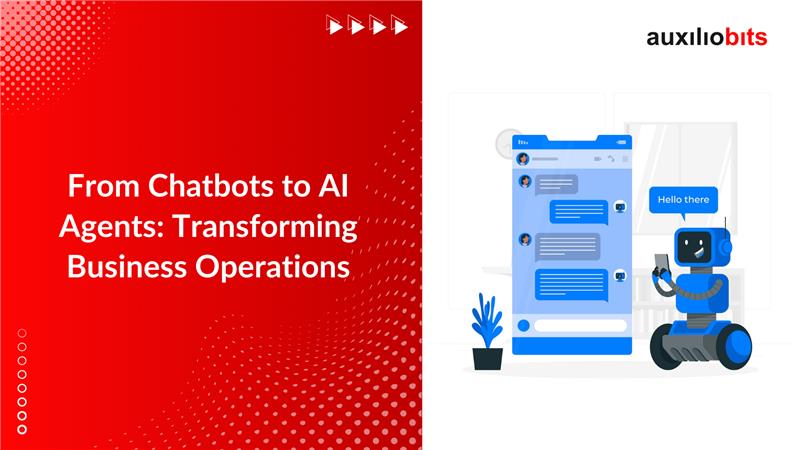
Key Takeaways
- LLMs act as the cognitive backbone of Agentic Process Automation (APA), enabling AI agents to understand context, interpret data, and make decisions with minimal human intervention.
- By leveraging real-time insights and reinforcement learning, LLMs refine decision-making, adapt to evolving business needs, and improve operational efficiency across various industries.
- LLMs power AI-driven virtual assistants and customer service bots, enabling intelligent, personalized interactions that enhance customer satisfaction while reducing manual workload.
- APA with LLMs orchestrates end-to-end workflows by integrating enterprise applications, APIs, and data sources, ensuring dynamic collaboration and process optimization.
- LLMs continuously learn from enterprise data, enabling APA systems to stay updated with industry trends, regulatory changes, and market shifts, ensuring sustained business innovation.
One technology that has significantly changed artificial intelligence is large language models (LLMs). They have revolutionized how machines understand and produce human language. LLMs can be best used for numerous reasons, including decision-making systems, virtual assistants, conversational AI, content creation, etc. Nevertheless, LLM can provide much more when integrated with agentic process automation. The integration explains a process where automated agents can conduct various activities with zero or less human help.
In agentic process automation, LLMs are a central cognitive backbone that allows systems to understand the context, interpret intricate details, and respond smartly in real time. Unlike traditional solutions, they offer adaptability and decision-making skills. So, LLMs let firms reduce manual efforts. Additionally, their workflow improves, and they can produce insights.
Imagine an AI agent managing customer interactions, resolving queries with contextual understanding, or processing financial reports by extracting key insights from unstructured data. That’s the power of APA and LLM integration. If you haven’t had an opportunity to use upcoming business opportunities, now is the time to proceed with the integration. It will help you gain success while evading possible obstacles.
Also read: From Chatbots to AI Agents: Transforming Business Operations
Key Components of APA
The key components of agentic process automation play a crucial role and should now be taken for granted. These components of agentic process automation are listed below:
AI Agents:
These independent entities can determine user intent, use real-time insights for immediate action, and handle complex details to execute multiple tasks seamlessly.
Decision Engines:
With so much competition in the marketplace, enterprises must set themselves apart. Therefore, LLM and AI will help them shine. Once the data is evaluated, they’ll help firms make quick decisions.
Memory Management:
Agentic process automation utilizes memory layers to store historical data and contextual information. The gathered data allows AI agents to refurbish and enhance quick decision-making skills.
Integration Layer:
Integration frameworks ensure seamless connectivity between AI agents, enterprise applications, APIs, and data sources. This layer facilitates real-time data exchange and cross-system collaboration.
Orchestration Frameworks:
These frameworks manage workflows by assigning tasks, monitoring progress, and ensuring efficient resource utilization. They enable the dynamic coordination of multiple AI agents working on interconnected processes.
The Role of LLMs in Agentic Process Automation (APA)
When it comes to the core cognitive engines, APA uses models like GPT-4, etc. These LLMs are designed to comprehend and produce human-like text, which allows AI agents to operate autonomously. Integrating LLMs into APA enables businesses to improve decision-making, streamline workflows, and react dynamically to real-world situations with minimal human intervention.
1. Contextual Understanding and Task Interpretation
LLMs excel at processing large volumes of unstructured data, including emails, reports, documents, and sensor data. Before offering outcomes, they understand what is needed. Additionally, they used data gathered from several sources to provide results. For example, in the financial industry, an AI agent can consider customer needs, identify market trends, and recommend valuable strategies. This helps AI agents to interpret and perform everyday tasks without making mistakes.
2. Decision-Making and Reasoning
Large Language Models can simulate human-like reasoning and are not limited to information extraction. By applying Reinforcement Learning from Human Feedback (RLHF) or external feedback mechanisms, BLLMs can improve their decision-making capabilities. They can ensure better results by analyzing historical data, learning from past outcomes, and adapting their decision-making strategies.
LLMs have the capabilities and expertise to offer real-time recommendations within agentic process automation. They also assess a lot of data. If there is a significant problem, LLMs help recognise potential outcomes. For example, an AI agent may analyze a customer’s financial records to determine whether they are eligible for a loan. They can also determine whether the customer can repay the loan on time, ensuring that all other rules are followed.
3. Conversational Automation
LLMs are essential in improving conversational automation because they are the core elements behind service agents, customer support bots, and virtual assistants. Monitoring what customers seek, responding to queries, and providing personalized solutions lessens the need for staff involvement in everyday activities.
For example, in a customer service scenario, an LLM-powered agent can engage in natural conversations, resolve common queries, escalate complex issues to human agents when necessary, and provide continuous support across multiple channels.
4. Continuous Learning and Adaptation
A key strength of LLMs is their capacity for continuous learning. By continuously training on company-specific data, LLMs can broaden their knowledge base and fine-tune their grasp of industry-specific intricacies. This adaptability allows APA systems to keep pace with shifting business landscapes, market volatility, and regulatory updates.
For instance, LLMs occasionally monitor medical research and treatment protocols. AI agents can then apply this knowledge in real time to help healthcare providers with accurate diagnoses and treatment recommendations.
Also read: Agentic AI: The Future of Autonomous Decision-Making in Enterprises
Technical Architecture of APA with LLMs
A well-structured Agentic Process Automation (APA) architecture integrates Large Language Models (LLMs) as the core intelligence across multiple layers. This approach makes sure that firms operate seamlessly and adapt to several environments. This way, APA systems gain the capability of autonomous operations. We have listed the vital layers below:
1. Input Layer
The Input Layer is the gateway for data acquisition, collecting structured and unstructured information from various enterprise sources. This consists of the following:
- Enterprise Systems: Companies can gather insights from CRM, ERP, and supply chain management platform data.
- Natural Language Inputs: Chatbots, voice assistants, and customer support portals capture conversational data for analysis by LLMs.
- IoT Devices: Real-time data from sensors and devices in manufacturing, logistics, and healthcare ecosystems feed into APA systems for contextual understanding.
- Documents and Reports: LLMs can seamlessly gather insights from several business reports; additionally, emails, contracts, and invoices help.
2. Cognitive Layer
The cognitive layer is one of the most intelligent hubs of the APA architecture. This is where AI models and LLMs interpret context and make decisions.
- Large Language Models (LLMs): Artificial intelligence agents can understand intricate inputs that conventional systems don’t. This makes it simple for LLMs to produce responses like humans. They use natural language generation and natural language understanding to respond to customers.
- Knowledge Graphs: It stores specialized information within a specific area of expertise and identifies the connections between entities to improve decision-making.
3. Execution Layer
Once all the decisions have been made, the execution layer uses AI agents and automation tools to change them into implementation. The elements are:
- Workflow Management Systems (WMS) organize and oversee task completion, managing dependencies and coordinating task execution.
- RPA Bots are ideal for structured tasks that follow specific rules, such as data entry, validation, and report generation.
- Intelligent Agents are independent agents that can manage intricate workflows. They are capable of adapting to changing circumstances and managing exceptions.
4. Feedback Layer
This layer guarantees effective enhancement through the utilization of observation as well as learning techniques. The fundamental components are:
- Continuous Learning Modules: LLMs are periodically retrained on enterprise-specific data to enhance accuracy and relevance.
- Human-in-the-Loop (HITL) Systems: Human experts provide feedback on AI decisions, ensuring accuracy and refining model predictions.
- Performance Monitoring: Real-time dashboards track APA performance metrics, detecting anomalies and identifying areas for optimization.
Best Practices for Implementing LLMs in APA
If you are someone who wants to implement LLMs into agentic process automation, make sure to follow some essential practices to gain the best outcomes. We have listed the practices below:
- Explain the Objectives: Prepare measurable goals to organize automation initiatives.
- Choose a Suitable Model: Select computational constraints based on LLMs.
- Fine-tune for Certain Domains: Perform domain-specific training for increased accuracy.
- Keep an Eye on and Improve Every Day: There is always room for improvement, so update the models whenever needed. If things don’t work as expected, monitor the situation and make the necessary adjustments.
Conclusion
There is no denying that LLMs are redefining business process automation. They help firms make a final call and work wonders regarding effective task management. Companies use LLM-driven automation to experience a seamless workflow, lessen manual intervention, and enhance customer interactions.
At Auxiliobits, we specialize in Agentic Process Automation, integrating LLMs to enhance business efficiency, decision-making, and AI-driven customer experiences. Our AI-powered solutions ensure seamless automation, process optimization, and innovation. Contact us today to learn more.






